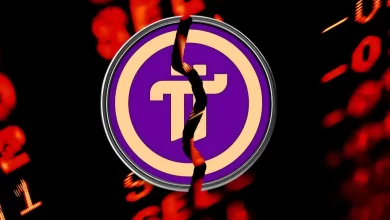
ECB’s Fabio Panetta warns crypto exposure could damage public trust in banks.
Stablecoins from tech giants may threaten Europe’s traditional payment systems.
The ECB pushes for regulation and a digital euro to counter growing crypto risks.
As traditional banks grow more curious and increasingly involved in crypto, not everyone’s celebrating the shift. On Friday, European Central Bank (ECB) policymaker and Bank of Italy Governor Fabio Panetta raised a red flag.
Panetta sees serious risk. His message was clear: banks diving into digital assets could end up paying a price in customer trust. And if that trust cracks, it’s not just crypto that takes the hit – it’s the entire financial system.
So, what’s got the ECB sounding the alarm? And why now, when crypto adoption seems more mainstream than ever? Let’s break it down.
The Confidence Risk Banks Can’t Ignore
At the Bank of Italy’s annual report presentation, Panetta made his concerns public. He warned that as more banks strike deals with crypto firms, they risk confusing customers who might assume these products come with the same safeguards as traditional banking.
“Crypto-asset holders might not fully understand their nature and conflate them with traditional banking products, with potentially negative repercussions for confidence in the credit system should losses occur,” Panetta said.
To be fair, it’s not just a hypothetical problem. If people lose money thinking their bank-backed crypto is as safe as a savings account, the fallout could do real damage to public confidence.
Europe’s Banks Are Already in Deep!
Despite the risks, some of Europe’s biggest financial institutions are already in the game.
Italy’s Intesa Sanpaolo made a splash earlier this year when it bought one million euros worth of Bitcoin. CEO Carlo Messina called it a “test,” but the move was just one step in a broader crypto strategy. The bank set up its own digital asset trading desk in 2023 and is now handling spot crypto trades.
Meanwhile, over in Spain, Santander is reportedly planning a deeper crypto push. According to Bloomberg, the bank is considering launching a stablecoin and offering crypto access to retail users through its digital platform.
These developments are exactly the kind Panetta is watching closely. They reflect the increasing integration between traditional banks and the crypto world – a shift that’s happening faster than regulators may be ready for. Something to think about.
Stablecoins and Big Tech: A Bigger Threat?
Panetta didn’t stop at crypto-assets. He also called out stablecoins, warning that their growth could undercut traditional payment systems especially if big tech firms decide to throw their weight behind them.
“In the absence of adequate regulation, their suitability as a means of payment is doubtful, to say the least,” he said.
His concern is that massive tech platforms could promote stablecoins on a global scale, sidelining central bank money in the process.
Europe’s Strategy: Compete With Crypto, Not Ban It
Still, Panetta isn’t calling for a crackdown. Instead, he sees the solution in catching up – not clamping down. That’s where the European Central Bank’s digital euro project comes in.
“What is needed is a response that matches the ongoing technological transformation,” he said. “The digital euro project stems precisely from this need.”
In short, Panetta’s message is this: crypto’s not going away. But if banks and regulators don’t move carefully and quickly public trust could take a hit.
Never Miss a Beat in the Crypto World!
Stay ahead with breaking news, expert analysis, and real-time updates on the latest trends in Bitcoin, altcoins, DeFi, NFTs, and more.
FAQs
Yes. The EU’s MiCA law enforces stricter KYC rules on crypto wallets to curb money laundering and increase transparency.
The EU uses MiCA to set unified crypto rules, while the US relies on fragmented regulations and enforcement by agencies like the SEC.
Yes. Banks like Intesa Sanpaolo and Santander are expanding into crypto trading and exploring stablecoin services.








